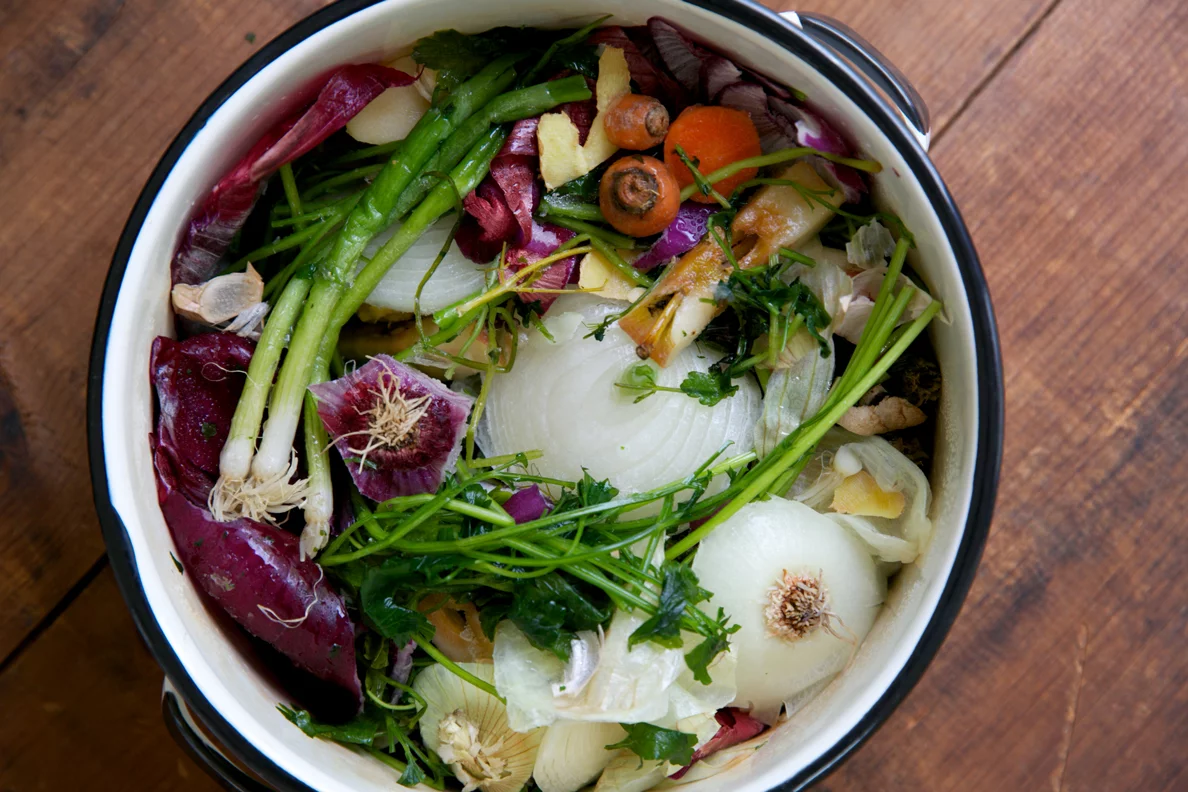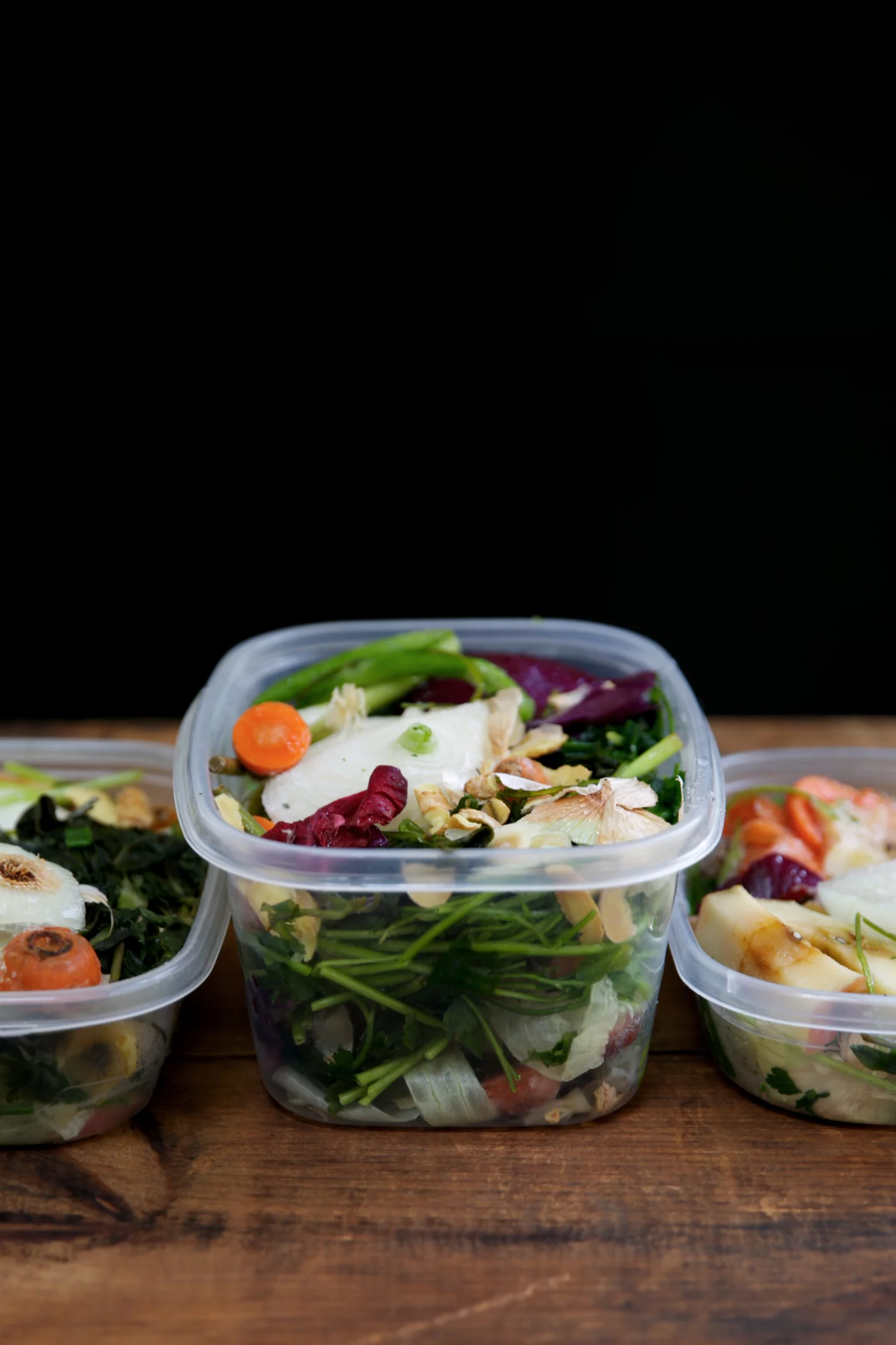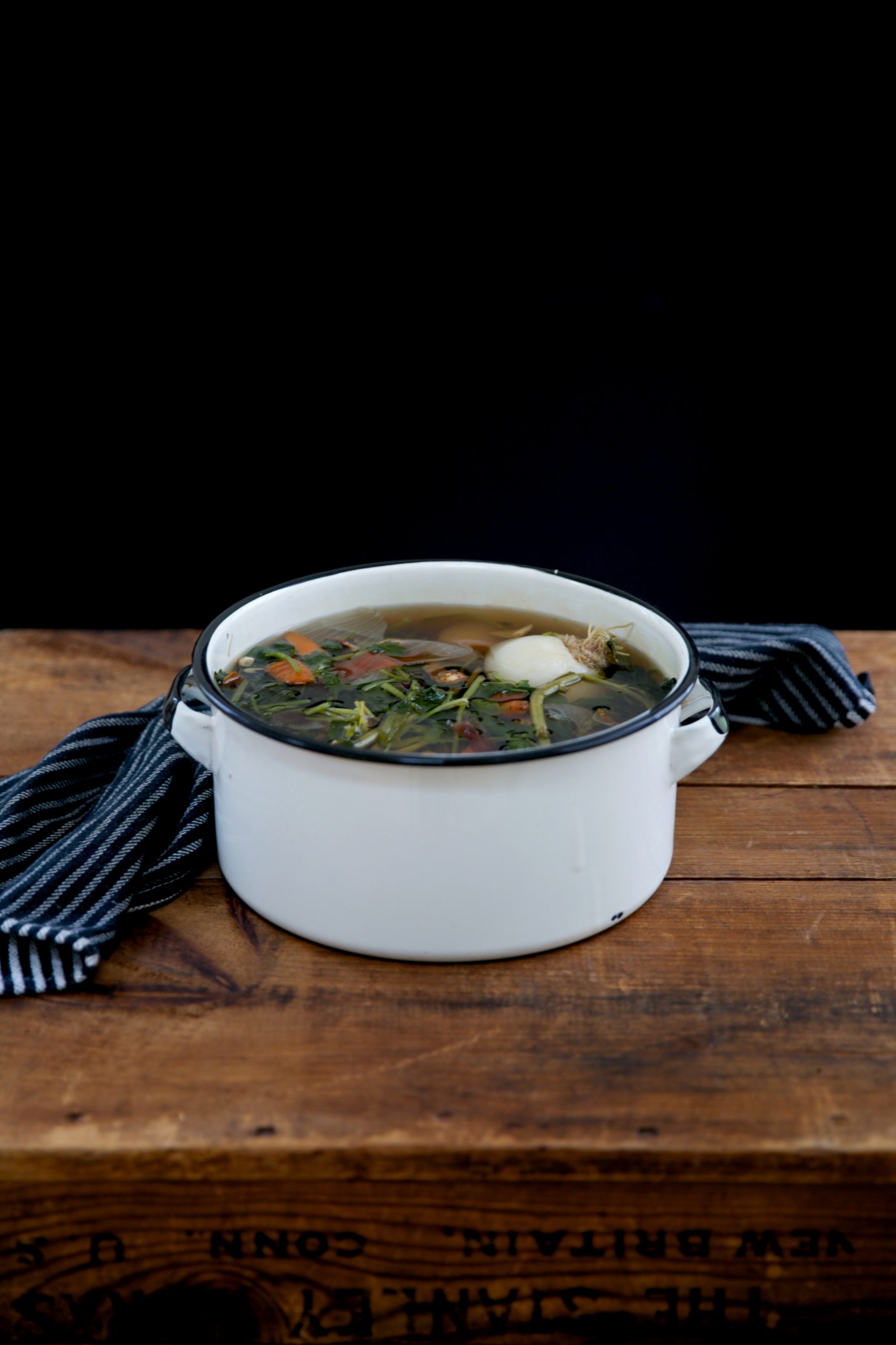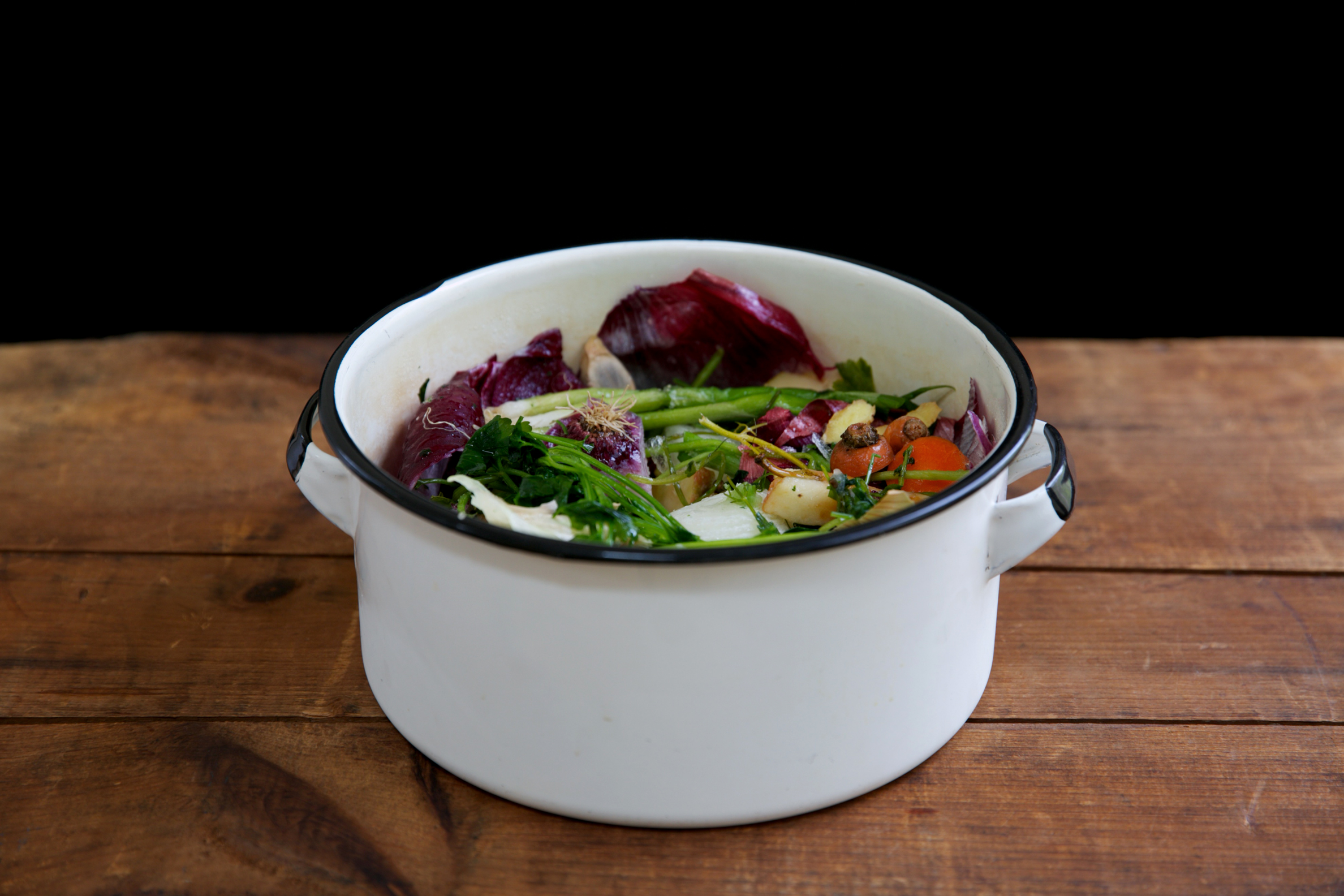Food has a way of bringing people together. In my mom’s family, our gatherings always include a pot of soup. And why not? With just a few simple ingredients and minimal effort, you can throw together something that tastes incredible.
Nearly every Saturday since before I was born, my grandma has put on a giant pot of soup – sometimes a few varieties – and the whole family would get together. And so every Saturday was deemed Soup Day.
Through the years, I’ve made many pots of soup. But it only recently occurred to me that I’ve been relying on a store-bought product for the easiest part – the stock. So this year I decided to change that. Making my own stock has become a monthly routine, and I see no reason to ever go back to store-bought.
Store-bought vs homemade stock
Stock is so easy to make, you’ll wonder why you’ve ever spent money on the store-bought stock. Have you ever looked at the ingredient list of packaged vegetable stock? The list contains veggies and herbs that you probably use on a regular basis – or should consider using if you don’t already. It probably also contains some preservatives that you can gladly avoid.
And don’t even get me started on bouillon cubes. Salt much? Sure, you can find some organic brands that may use less salt and avoid MSG, but the nutritional value is basically non-existent.

Whereas homemade stock is a fresh infusion of whole ingredients, much like when you brew loose-leaf tea. Veggies and herbs are heated in water at a simmer for an hour with a low and slow heat to combine all the flavors. With this infusion process, homemade stock offers an immune boost to ward off illness, fights inflammation (with use of garlic, celery, onion, ginger), and helps repair gut health for better digestion. And you get to choose what goes in and what doesn’t.
Don’t toss those scraps!
With a little bit of planning ahead, you can make your own veggie stock for free. Think about all the times you prepare food… what do you do with the scraps? The ends of the carrots and onions, ginger peels, apple cores, stems of herbs, and mushroom stems? Maybe you toss them out, or maybe you use them for compost. Instead, you can dedicate a freezer container to saving scraps like these (for up to six months). Once the container is full (which for me is every month), you’re ready to add them to a pot and make your own veggie stock.


What ingredients work best for vegetable stock?
Let’s get more specific. Do any food scraps work? Not really. Bitter veggies like cabbage and broccoli may not be best (although, I’ve read contrary thoughts on this). But this isn’t limiting if you use any of the following foods regularly. These items are great for creating a really flavorful and nutrient-dense stock:
– carrots
– garlic
– ginger
– celery
– fennel
– parsnips
– onions (red/yellow/white)
– green onions
– shallots
– fresh herbs (parsley, basil, cilantro)
– apples, pears
– mushrooms
– tomatoes
– dried bay leaves
– peppercorns
You may be asking yourself, what’s with the apples and pears? Veggie stock can use a little bit of sweetness. Adding a few apple and pear cores are a great way to achieve this flavor without added sugar. Carrots are also slightly sweet and help with this. But don’t go adding pineapple into your stock pot… Consider apples and pears the fruit exceptions.
Start cookin’
Once you’ve gathered a variety of scraps, add them to a large pot. Fill with enough water to cover your scraps. I usually use a double ratio of water to scraps. But you may instead choose to use less water for a more condensed stock. There’s really no wrong quantity here. It does get a little more specific if meat and bones are involved. So veggie stock keeps it simplified and versatile.
Bring the water and scraps to a light boil, then reduce to a simmer. Simmer for an hour or so. Meanwhile, enjoy how fresh your kitchen smells with the concoction brewing on your stove.


After it’s done simmering, remove the pot from heat and allow it to cool for a bit before straining. I use a fine mesh colander over a large bowl to separate the scraps. If you have a regular colander that’ll work, or you can also add some cheesecloth to line the colander.
Then simply add your homemade stock to some containers. I keep one in the fridge to use within the next few days, and I freeze the remaining amount divided into portions to last throughout the rest of the month. Sometimes I end up with an especially large batch, which makes for some easy, thoughtful gifts. Fill some jars you have stashed away and share! Soup Day favors, perhaps?

How to use your stock
Stock is the base of any soup or stew, but you can also put it to use in other ways. In many dishes, stock can be used in place of water to create more depth of flavor while soaking up all the nutrients. The next time you cook rice, use your homemade veggie stock in place of water. Need some other ideas? Use it to cook noodles and any other grain such as quinoa, millet, etc. You can also use it when cooking dried beans.
It’s probably no surprise that soup is what I really want from my homemade stock. I like to try new variations, and a latest favorite of mine is this Japanese noodle soup. It’s light and satisfying, and it’s packed with nutrition.

Japanese Noodle Soup
Serves 2 as main course or 4 as sides
INGREDIENTS
8 oz Udon noodles or Rice noodles (plus water or separate stock for cooking)
2 Tablespoon Grapeseed oil
2 Green onions
1 inch Ginger root, peeled and finely chopped
2 Garlic cloves, peeled and finely chopped
1 cup Shiitake mushrooms
2 Tablespoons Tamari Soy Sauce
6 cups Vegetable stock
2 teaspoons Red Miso Paste
Spinach
Carrot, shredded
DIRECTIONS
Prepare noodles as directed on packaging. Be sure to slightly undercook them.
In an empty medium pot on low-medium heat, add grapeseed oil, diced green onion (just the white parts – save the green for garnish), ginger, garlic, shiitake mushrooms, and tamari. Sauté for a few minutes until fragrant, stirring constantly.
Add vegetable stock and simmer for a few minutes to mix the flavors.
Scoop out some of the broth and stir the miso paste into it until dissolved. Pour the miso broth mixture into the pot and remove the pot from heat.
Prepare serving bowls by adding to each a handful of spinach, shredded carrot, and chopped green onion. Add more chopped green onion to garnish.

Check out more soup recipes as well as our San J soup mixes!
Back to Top

